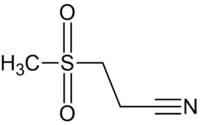
Photo from wikipedia
Isoxazole derivatives are significant enough due to their wide range of pharmacological and therapeutic activities. The purpose of the current study is to use computational, in vitro, in vivo, and… Click to show full abstract
Isoxazole derivatives are significant enough due to their wide range of pharmacological and therapeutic activities. The purpose of the current study is to use computational, in vitro, in vivo, and extensive molecular approaches to examine the possible anti-ulcer activity of 4-benzylidene-3 methyl-1,2-isoxazol-5(4H)-one (MBO). Biovia Discovery Studio visualizer (DSV) was utilized for virtual screening. A tissue antioxidant investigation, H+/K+-ATPase test, and anti-H. pylori activities were carried out. ELISA, immunohistochemistry, and PCR methods were employed for the proteome analysis. An ethanol-induced stomach ulcer model was used to examine the anti-ulcer potential in rats. The binding affinities for MBO ranged from −5.4 to −8.2 Kcal/mol. In vitro findings revealed inhibitory activity against H. pylori and the H+/K+-ATPase pump. It also enhanced levels of glutathione, catalase, and glutathione-S-transferase and reduced lipid peroxidation levels in gastric tissues of rats. In vivo results showed the gastro-protective effect of MBO (30 mg/kg) in ulcerative rat stomachs. The proteomic study revealed decreased expression of inflammatory markers (cyclooxygenase-2, p-NFkB, and TNF-α). In RT-PCR analysis, the expression levels of H+/K+-ATPase were reduced. Furthermore, ADMET (absorption, distribution, metabolism, excretion and toxicity) studies revealed that MBO has high GIT solubility and has a safer profile for cardiac toxicity. This study suggests that MBO displayed anti-ulcer potential, which may have been mediated through the inhibition of the H+/K+-ATPase pump, as well as antioxidant and anti-inflammatory pathways. It has the potential to be a lead molecule in the treatment of peptic ulcers with fewer adverse effects.
Journal Title: Molecules
Year Published: 2022
Link to full text (if available)
Share on Social Media: Sign Up to like & get
recommendations!